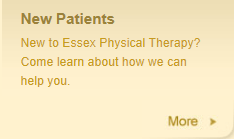
Torticollis
Torticollis, also known as wry neck, spasmodic torticollis, and torsion dystonia, is a symptom of an underlying problem rather than a disease in itself. The term torticollis originates from the Latin word torti (twisted) collis (neck), and describes a posture in which the head is involuntarily twisted to one side and often side bent to the opposite side. For example, tightness in a left sided neck (sternocleidomastoid) would create side bending to the left and rotation to the right.Torticollis can be present at birth (congenital), or occur later in life (acquired). It is estimated that 200,000 infants are born with this condition in the US. The current theory is that its cause might be related to how the child was positioned in utero, or injury to one of the neck muscles during labor. The condition is more common with breech delivery.Treatment for torticollis varies based on the cause, but for positional or congenital muscular torticollis, treatment starts with physical therapy. Therapists will show parents how to stretch the tight muscles and position the infant to encourage muscle development, as weakness quickly develops and often delays rolling movements in the young infant. Early detection and intervention is the best treatment.

Children with torticollis often develop compensatory movement patterns, avoiding reciprocal movements of crawling by scooting on their bottom to achieve locomotion. The reciprocal nature of crawling establishes this movement pattern, which also can be seen in walking or running later on. Often, these children run without one arm swinging, or develop difficulty with balance due to one side of the body being stronger than the other. Home exercises to help develop the weaker muscles is the key to success for these children.
Contact us to request more information about our classes and camps.
SHARE THIS PAGE:


